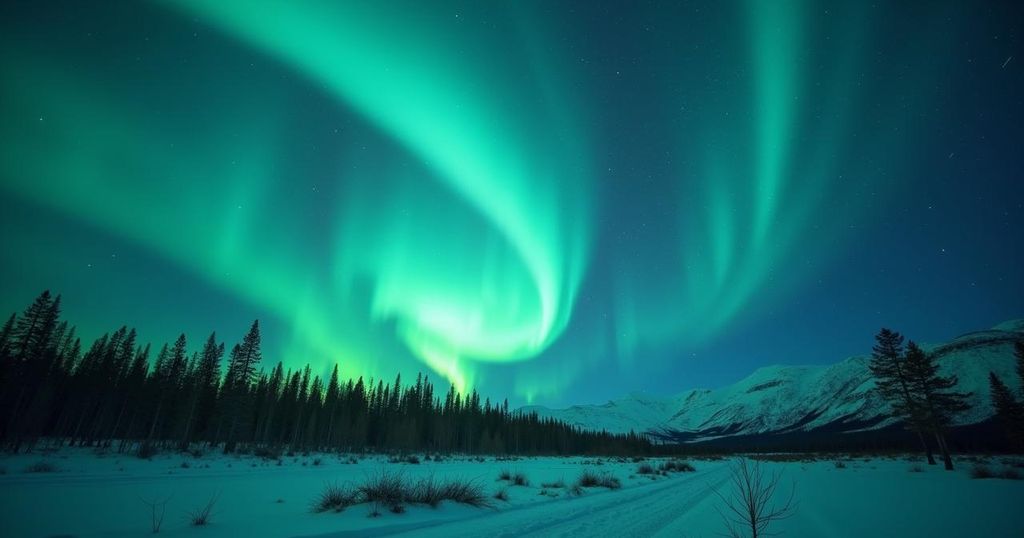A severe solar storm on Thursday night resulted in the northern lights being visible at unusually low latitudes, including in New York, D.C., and Texas. This geomagnetic event followed a recent, intense solar storm and underscored the ongoing peak of the solar cycle, promising additional auroral displays in the coming years.
On Thursday evening, a severe solar storm illuminated the skies across various regions worldwide with stunning displays of the northern lights, showcasing vibrant hues of purple, red, and green. The phenomenon, typically confined to areas nearer the poles, was notably witnessed as far south as Texas, including major metropolitan areas such as New York City and Washington, D.C. This event marked the second intense geomagnetic storm to impact Earth this year, following an exceedingly powerful storm that occurred on May 10 and 11, which was categorized as ‘extreme’ on the scale of geomagnetic disturbances. This latest geomagnetic phenomenon resulted from a coronal mass ejection from the sun, which released particles traveling at nearly 1.5 million miles per hour, disrupting Earth’s magnetic field. As these particles interacted with the upper atmosphere, they caused nitrogen and oxygen molecules to emit light, forming the breathtaking auroras. Interestingly, red auroras, typically observed at higher altitudes, were more prevalent at lower latitudes during this event. The auroras first appeared in Europe, dazzling observers in London and extending into southern France. Despite concerns from aurora enthusiasts that the spectacle might diminish before sundown in the United States, the display persisted, captivating onlookers across the country. Residents in areas that missed the May auroras, including those in the D.C. vicinity, were able to experience the phenomenon firsthand, with visibility noted between approximately 7:10 and 7:25 PM, followed by enhanced visibility with specialized camera equipment throughout the night. As we are currently witnessing the peak of the 11-year solar cycle, experts anticipate that additional occurrences of the northern lights will continue to grace the skies in the coming few years. Bob Leamon, a solar physicist affiliated with the University of Maryland Baltimore County and NASA, remarked, “The next three or four years, we should see some fine displays of aurora.” Such events offer an extraordinary opportunity for many to witness an awe-inspiring natural phenomenon.
The northern lights, or aurora borealis, typically manifest near the polar regions and are caused by interactions between solar particles and Earth’s magnetic field. These phenomena have become increasingly visible at lower latitudes during periods of heightened solar activity, such as during intense geomagnetic storms resulting from solar outbursts. The current solar cycle, which exhibits a pattern of increased solar activity every eleven years, is at its peak, suggesting more frequent auroral displays may occur in the near future. Understanding these celestial events allows scientists to gain insights into both solar dynamics and terrestrial atmospheric phenomena.
In conclusion, the recent severe solar storm has provided a rare opportunity for individuals in lower latitude regions to witness the extraordinary northern lights as they illuminated the night sky. This event serves as a reminder of the dynamic relationship between the Earth and the sun, as well as the potential for future auroral displays predicted over the next few years as we continue to experience heightened solar activity.
Original Source: www.washingtonpost.com






